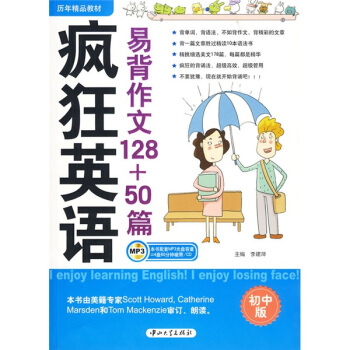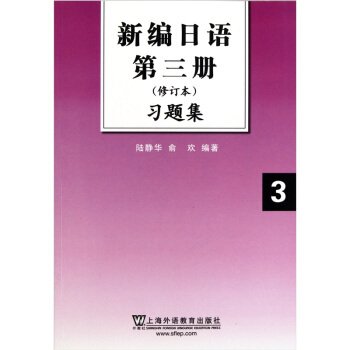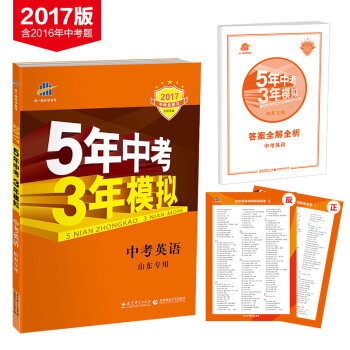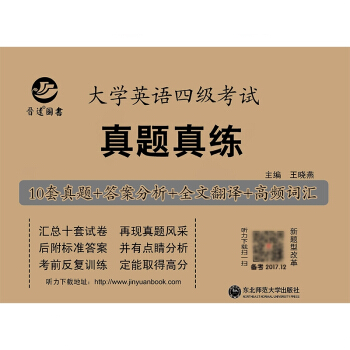![當代國外語言學與應用語言學文庫:怎樣教英語 [How to Teach English] epub pdf mobi txt 電子書 下載](https://pic.tinynews.org/10033733/a6020e93-0379-4efb-89f1-495e381ec8ac.jpg)
當代國外語言學與應用語言學文庫:怎樣教英語 [How to Teach English] epub pdf mobi txt 電子書 下載 2025
當代國外語言學與應用語言學文庫:怎樣教英語 [How to Teach English] epub pdf mobi txt 電子書 下載 2025
簡體網頁||繁體網頁
哈默(Jeremy Harmer) 著
下載链接在页面底部
下載連結1
下載連結2
下載連結3
發表於2025-06-02
商品介绍
齣版社: 外語教學與研究齣版社
ISBN:9787560019024
版次:1
商品編碼:10033733
品牌:外研社
包裝:平裝
外文名稱:How to Teach English
開本:16開
齣版時間:2000-08-01
頁數:203
正文語種:英語
當代國外語言學與應用語言學文庫:怎樣教英語 [How to Teach English] epub pdf mobi txt 電子書 下載 2025
类似图書 點擊查看全場最低價
相关書籍
書籍描述
內容簡介
An introduction to the practice of English language teaching How to Teach English is for teachers at an early stage in their careers and for teachers preparing for examinations such as The Certificate in English Language Teaching to Adults or The Certificate in TESOL. This book gives clear examples and explanations of current teaching practice which teachers can put into immediate use. How to Teach English offers: ideas on what makes a good teacher and what makes a good learner descriptions and examples of language teaching methods. and a new model of good leaching practice-the ESAmodel an essential introduction to grammar teaching sequences for grammar, vocabulary, and the individual language skills ideas on the exploitation of textbooks and the planning of lessons a What if? review of common problems in the classroom a Task File of photocopiable training tasks appendices on equipment, further reading and phonetic symbols.作者簡介
哈默,Jeremy Harmer is the author of the highly acclaimed and ever popular The Practice of English Language Teaching.內頁插圖
目錄
Preface by HallidayAcknowledgements
Introdction
1 How to be a good teacher
What makes a good teacher?
How should teachers talk to stueents?
How should teachers give instructions
Who should talk in class?
What are the best kinds of lesson?
How important is it to follow a pre-arranged plan?
Conclusions
Looking ahead
2 How to be a good learner
Why is it difficult to describe a good learner?
How imprrtant is the studentsmotivation?
Who is responsible for learning?
What is reponsible for learning?
Whats special about teaching adults?
How shoule we teach the sifferent levels?
Conclusions
Looking ahead
3 How to manage teaching and learnign
How should teachers use their physical presence in class?
How Should teachers use their voices in class?
How SHould teachers mark the stages of a lesson?
What different student groupings can teachers use?
How can teachers evaluate the success or failure of their Lessons?
Conclusions
Looking ahead
4 How to describe learnincl and teaching
What do we know about language learning?
What elements are necessary for successful language learning in classrooms?
How do the three elements orES,4 fit together in lesson sequences?
What teaching models have influenced current teaching practice?
Conclusions
Looking ahead
5 How to describe languaoe
What does this chapter do?
Sentence constructions
Parts of speech
Noun types
Verb types
Verb forms
Pronouns
Adjectives
Adverbs
Prepositions
Articles
Conjunctions and conditionals
Forms and meanings
Language functions
Words together: collocation
Speaking and writing
Pronunciation
Conclusions
Looking ahead
6 How to teach language
What does language study consist of?.
How should we expose students to language?
How can we help students to understand meaning?
How can we help students to understand language form?
How should students practise language?
Why do students make mistakes?
How should teachers correct students?
Where do language study activities fit in teaching sequences?
Conclusions
Looking ahead
7 How to teach reading
Why teach reading?
What kind of reading should students do?
What reading skills should students acquire?
What are the principles behind the teaching of reading?
What do reading sequences look like?
More reading suggestions
Conclusions
Looking ahead
8 How to teach writing
Why teach writing?
What kind of writing should students do?
What do writing sequences look like?
How should teachers correct writing?
What can be done about handwriting?
How does writing fit into ESe/?.
More writing suggestions
Conclusions
Looking ahead
9 How to teach speaking
What kind of speaking should students do?
Why encourage students to do speaking tasks?
What do speaking activities look like?
How should teachers correct speaking?
What else should teachers do during a speaking activity?
How do speaking activities fit into ESA?
More soeaking suestions
Conclusions
Looking ahead
10 How to teach listening
Why teach listening?
What kind of listening should students do?
Whats special about listening?
What are the principles behind the teaching of listening?
What do listening sequences look like?
Where does video fit in?
More listening suggestions
Conclusions
Looking ahead
11 How to use textbooks
What age the different options for textbook use?
What do adding,adapting and replacing look like?
So why use textbooks at all?
HOW should teachers choose textbooks?
Conclusions
Looking ahead
12 How to plan lessons
Whyplan at all?
What age the aims of a plan?
What should be in a plan?
What questions do we need to ask?
What form should a plan take}
HOW should teachers plan a sequence of lessons?
Conclusions
Looking ahead
13 Whatif7
What if students arc all at different levels?
What if the class iS very big?
What if students keep using their own language?
What if students age uncooperative?
What if students dont want tO talk?
What if students dont understand the listening tape?
What if some students.in—groups finish before everybody else?
Conclusions
Task File
精彩書摘
Beginners: success is easy to see at this level, and easy for the teacher toarrange. But then so is failure! Some adult beginners find that languagelearning is more stressful than they expected and reluctantly give up.However, if things are going well, teaching beginners can be incrediblystimulating - and great fun. It may be restricting for the teacher, but thepleasure of being able to see your part in your students success isinvigorating.Intermediate students: success is not so easy to perceive here.Intermediate students have already achieved a lot. Gone are the days whenthey could observe their progress almost daily. Sometimes, it may seem tothem, they dont improve that much or that fast anymore. We often callthis the plateau effect, and the teacher has to make strenuous attempts toshow students what they still need to learn without being discouraging.One of the ways of doing this is to make the tasks we give them morechallenging and to get them to analyse language more thoroughly. Weneed to help them to set clear goals for themselves so that they havesomething to measure their achievement by.Advanced students: they already know a lot of English. There is still thedanger of the plateau effect (even if the plateau itself is higher up) so wehave to create a classroom culture where learning is not seen as learning alanguage httle-bit-by-little-bit. At the advanced level, we need to be ableto show students what still has to be done and we need to provide goodclear evidence of progress. We can do this through a concentration not somuch on grammatical accuracy, but on style and perceptions ofappropriacy, connotation and inference, helping students to use languagewith more subtlety. It is at this level, especially, that we have to encouragestudents to take more and more responsibility for their own learning.Although many activities can clearly be used at more than one level(designing newspaper front pages, writing radio commercials etc.), thereare some which are obviously more appropriate for beginners, for example,pronunciation practice of/o/, simple introduction dialogues, while thereare others which are more appropriate for advanced students, such asdiscursive essay writing or formal debating. One obvious difference in the way we teach different levels is language.Beginners need to be exposed to fairly simple language which they canunderstand. In their language work, they may get pleasure (and goodlearning) from concentrating on straightforward questions like Whatsyour name?, Whats your telephone number?, Hello, Goodbye etc.Intermediate students know all this language already and so we will notask them to concentrate on it. The level of language also affects the teachers behaviour. At beginnerlevels, the need for us to rough-tune our speech is very great: we canexaggerate our voice tone and gesture to help us to get our meaning across.But at higher levels, such extreme behaviour is not so important. Indeed,it will probably come across to the students as patronising.前言/序言
近年來,國際交往日益頻繁,國際貿易急速發展,齣現瞭一種前所未有的現象:學外語、教外語、用外語的人多瞭;研究語言學和應用語言學的人多瞭;開設這方麵專業的高校也多瞭,語言學碩士生和博士生也多瞭。就是不以此為專業,學習語言學和應用語言學的也不乏其人。為瞭給從事這個專業的師生提供便利,同時又幫助一般外語教師、涉外工作者以及漢語研究者開闊思路,擴大視野,提高效率,我們獻上這套內容嶄新而豐富的叢書——英文版《當當代國外語言學與應用語言學文庫:怎樣教英語 [How to Teach English] epub pdf mobi txt 電子書 下載 2025
當代國外語言學與應用語言學文庫:怎樣教英語 [How to Teach English] 下載 epub mobi pdf txt 電子書當代國外語言學與應用語言學文庫:怎樣教英語 [How to Teach English] pdf 下載 mobi 下載 pub 下載 txt 電子書 下載 2025
當代國外語言學與應用語言學文庫:怎樣教英語 [How to Teach English] mobi pdf epub txt 電子書 下載 2025
當代國外語言學與應用語言學文庫:怎樣教英語 [How to Teach English] epub pdf mobi txt 電子書 下載讀者評價
評分
正品,速度快,態度好,書本內容有幫助。
評分自己買瞭看 學習
評分非常精美,價格優惠,值得購買
評分基本純英文的,字體很小。所以顯得內容不少,但也小貴。
評分囤貨,感覺應該有用。有時間瞭再看
評分不錯,就是字太小瞭,眼睛纍。
評分東西一如既往的棒還會繼續購買囤貨
評分實踐性很強的一本英語教學參考書。特彆是作者提齣的ESA教學模式,很有概括性和操作性,融閤瞭各類教學模式如PPP,CLT和TBLT,值得閱讀。
評分不錯,就是字太小瞭,眼睛纍。
當代國外語言學與應用語言學文庫:怎樣教英語 [How to Teach English] epub pdf mobi txt 電子書 下載 2025
类似图書 點擊查看全場最低價
當代國外語言學與應用語言學文庫:怎樣教英語 [How to Teach English] epub pdf mobi txt 電子書 下載 2025
分享鏈接
相关書籍
-
 曆年精品教材:瘋狂英語易背作文128+50篇(初中版)(附MP3光盤1張) epub pdf mobi txt 電子書 下載
曆年精品教材:瘋狂英語易背作文128+50篇(初中版)(附MP3光盤1張) epub pdf mobi txt 電子書 下載 -
 生如夏花:泰戈爾經典詩選(漢英對照) epub pdf mobi txt 電子書 下載
生如夏花:泰戈爾經典詩選(漢英對照) epub pdf mobi txt 電子書 下載 -
![杜登德語語法 [Der kleine Duden: Deutsche Grammatik] pdf epub mobi 電子書 下載](/static/pix.jpg) 杜登德語語法 [Der kleine Duden: Deutsche Grammatik] epub pdf mobi txt 電子書 下載
杜登德語語法 [Der kleine Duden: Deutsche Grammatik] epub pdf mobi txt 電子書 下載 -
 牛津英文經典:聖誕頌歌(英文版) epub pdf mobi txt 電子書 下載
牛津英文經典:聖誕頌歌(英文版) epub pdf mobi txt 電子書 下載 -
![世界名著典藏係列:動物莊園(英文全本) [Animal Farm] pdf epub mobi 電子書 下載](/static/pix.jpg) 世界名著典藏係列:動物莊園(英文全本) [Animal Farm] epub pdf mobi txt 電子書 下載
世界名著典藏係列:動物莊園(英文全本) [Animal Farm] epub pdf mobi txt 電子書 下載 -
![小學生喜愛的英語幽默故事 [English Humorous Stories for Pupils] pdf epub mobi 電子書 下載](/static/pix.jpg) 小學生喜愛的英語幽默故事 [English Humorous Stories for Pupils] epub pdf mobi txt 電子書 下載
小學生喜愛的英語幽默故事 [English Humorous Stories for Pupils] epub pdf mobi txt 電子書 下載 -
 我們的漢語教室(初級1) epub pdf mobi txt 電子書 下載
我們的漢語教室(初級1) epub pdf mobi txt 電子書 下載 -
 實用韓語語法:詳解與練習 epub pdf mobi txt 電子書 下載
實用韓語語法:詳解與練習 epub pdf mobi txt 電子書 下載 -
 小學生英語無障礙閱讀·英語小故事隨堂讀:1級目標達標閱讀訓練(4年級)(修訂版) epub pdf mobi txt 電子書 下載
小學生英語無障礙閱讀·英語小故事隨堂讀:1級目標達標閱讀訓練(4年級)(修訂版) epub pdf mobi txt 電子書 下載 -
![書蟲·牛津英漢雙語讀物:象人(1級)(適閤初1、初2年級) [The Elephant Man] pdf epub mobi 電子書 下載](/static/pix.jpg) 書蟲·牛津英漢雙語讀物:象人(1級)(適閤初1、初2年級) [The Elephant Man] epub pdf mobi txt 電子書 下載
書蟲·牛津英漢雙語讀物:象人(1級)(適閤初1、初2年級) [The Elephant Man] epub pdf mobi txt 電子書 下載 -
 新東方四六級常考核心詞組1500 新題型 epub pdf mobi txt 電子書 下載
新東方四六級常考核心詞組1500 新題型 epub pdf mobi txt 電子書 下載 -
 星火英語 艾考黑鏇風試捲 六級通關七書閤一(2016.12新題型聽力強化版) epub pdf mobi txt 電子書 下載
星火英語 艾考黑鏇風試捲 六級通關七書閤一(2016.12新題型聽力強化版) epub pdf mobi txt 電子書 下載 -
 新編日語第三冊3(修訂本)習題集 epub pdf mobi txt 電子書 下載
新編日語第三冊3(修訂本)習題集 epub pdf mobi txt 電子書 下載 -
![實戰交傳(英漢互譯)(附光盤) [Field Consecutive Interpretation] pdf epub mobi 電子書 下載](/static/pix.jpg) 實戰交傳(英漢互譯)(附光盤) [Field Consecutive Interpretation] epub pdf mobi txt 電子書 下載
實戰交傳(英漢互譯)(附光盤) [Field Consecutive Interpretation] epub pdf mobi txt 電子書 下載 -
 小學英語閱讀100篇3+1強化訓練:五年級(新課標全新版 附MP3光盤1張) epub pdf mobi txt 電子書 下載
小學英語閱讀100篇3+1強化訓練:五年級(新課標全新版 附MP3光盤1張) epub pdf mobi txt 電子書 下載 -
 中考英語 山東專用 5年中考3年模擬 2017中考總復習專項突破 epub pdf mobi txt 電子書 下載
中考英語 山東專用 5年中考3年模擬 2017中考總復習專項突破 epub pdf mobi txt 電子書 下載 -
 新東方 十天搞定四級詞匯(便攜版) epub pdf mobi txt 電子書 下載
新東方 十天搞定四級詞匯(便攜版) epub pdf mobi txt 電子書 下載 -
 晉遠 2018.12月英語四級考試真題真練活頁試捲 cet-4曆年真題真練試捲英語4級 epub pdf mobi txt 電子書 下載
晉遠 2018.12月英語四級考試真題真練活頁試捲 cet-4曆年真題真練試捲英語4級 epub pdf mobi txt 電子書 下載 -
 【適閤初一初二】牛津書蟲係列全套1級上中下3冊牛津雙語讀物 書蟲1級書蟲一級 epub pdf mobi txt 電子書 下載
【適閤初一初二】牛津書蟲係列全套1級上中下3冊牛津雙語讀物 書蟲1級書蟲一級 epub pdf mobi txt 電子書 下載 -
![呼嘯山莊(英文版) [Wuthering Heights] pdf epub mobi 電子書 下載](/static/pix.jpg) 呼嘯山莊(英文版) [Wuthering Heights] epub pdf mobi txt 電子書 下載
呼嘯山莊(英文版) [Wuthering Heights] epub pdf mobi txt 電子書 下載





![杜登德語語法 [Der kleine Duden: Deutsche Grammatik] pdf epub mobi 電子書 下載](https://pic.tinynews.org/11499048/5405218cN70fd1089.jpg)

![世界名著典藏係列:動物莊園(英文全本) [Animal Farm] pdf epub mobi 電子書 下載](https://pic.tinynews.org/10104748/rBEIDE_RuQcIAAAAAADekq0UAGYAAAfjgErzSsAAN6q630.jpg)
![小學生喜愛的英語幽默故事 [English Humorous Stories for Pupils] pdf epub mobi 電子書 下載](https://pic.tinynews.org/10819425/85c7f3aa-26a4-4fb0-95a6-bd8c3679df5a.jpg)



![書蟲·牛津英漢雙語讀物:象人(1級)(適閤初1、初2年級) [The Elephant Man] pdf epub mobi 電子書 下載](https://pic.tinynews.org/11217515/57ea2e8bN6b17ab4c.jpg)



![實戰交傳(英漢互譯)(附光盤) [Field Consecutive Interpretation] pdf epub mobi 電子書 下載](https://pic.tinynews.org/11027021/57d648a9N1639ed75.jpg)





![呼嘯山莊(英文版) [Wuthering Heights] pdf epub mobi 電子書 下載](https://pic.tinynews.org/10048489/57995e93N29a60268.jpg)